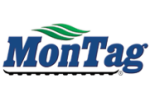We’ve heard for years that “information is power” and one needs to look no further than the travel industry to see the effects online commerce has had in the buying and selling of airline tickets and hotel room rentals. Very few people call a travel agent to take care of those things today, whereas 20 years ago, company or independent agents booked nearly all flights and a significant amount of lodging and rental car business.
Closely tied with online purchases is a rapid move toward “dynamic pricing.” For retailers, dynamic pricing calls for flexible pricing that might include numerous price changes on a stocked item each day. It could be based on demand, time of day, competitive prices or potential demand changes because of current events.
Actually, we’ve all seen dynamic pricing at work for years at the gas pump. Gasoline that was stocked in a retailer’s underground tanks may have been purchased wholesale at $1.97 per gallon, and originally priced at $2.08. Later in the day news reports tell of a refinery fire in California and, based on anticipated shortages, the price jumps to $2.24 per gallon.
Market reaction to the news changed its value. With today’s interconnected computer networks and 24 hour news cycle, markets can and do move according to numerous factors.
Dynamic Pricing Spreads
This same technology is coming to retail outlets everywhere. Top U.S. grocer Kroger is installing flexible digital price tags on most of its shelves, all in an effort to capture the best price during a day’s marketing cycle. Airlines too are using dynamic pricing, which yields vastly different prices for similar seats on the same flight.
Those changes are fast coming to agriculture too. Various seed and fertilizer companies have begun linking their customers with one another to enable them to network, benchmark and compare hybrid and fertilizer performance, along with ag chemical prices on similarly-managed farm fields.
Democratizing Information
One entity, Farmers Business Network, is taking the networking model further. Its $500 flat-rate annual subscription membership provides growers with a place to store, clean and analyze all of their digital field data in easy-to-read maps and field profiles — regardless of what brand monitors generated those pixels or what color equipment was being used. They’ll also help members find lowest-cost crop inputs and offer them attractive financing if they need it.
While FBN was launched as an agronomic network, its input purchasing services and fledgling equipment performance appraisals could change business-as-usual practices for farm equipment and chemical dealers and agronomic consulting businesses.
“FBN is an independent farmer-to-farmer network that is democratizing grower information and putting more information in the hands of growers,” says Charles Baron, vice president and co-founder of FBN, a late-2014 startup based in San Carlos, Calif.
Through the FBN analytics platform, a subscriber can organize all field data in a single place. FBN benchmarks, maps and analyzes their data so growers can see what is working for them, what is not and how they can improve. FBN Seed Finder has real-world yield performance from over 1,100 hybrids — and can be adjusted to find the best seeds for each grower’s unique conditions, Baron says.
“The FBN mapping platform includes soil types, yield, prescription accuracy, yield improvement, elevation and moisture. Fertilizer applications, grid sampling, economic and seed variety maps are coming soon,” he adds.
The company supports more than 35 monitor brands and formats. “With the precision accuracy maps we can analyze the performance of planting equipment,” Baron explains.
“Farmers often pay for a planting prescription, but their planter may not be capable of executing the prescription. We’ve seen instances where the planter could only execute 70% of the target population.
“We analyze the data to determine potential problems. These might include excessive planting speeds or populations, and can give farmers a field-by-field printout of what affected their planting performance.”
Equipment Comps Coming
“We’ve had many requests for equipment comparisons, and we will be doing that in the future,” Baron says. “FBN could analyze high-speed and multi-hybrid planters and how to optimize them. Likewise, with conventional planters, we can look at data across our membership and begin to determine when growers might have to slow them down.”
He says FBN will be looking at tillage, nutrient applicators, irrigation, along with row spacing to help members make the best decisions on those variables. He adds the company will soon begin adding row spacing into seed evaluations.








Post a comment
Report Abusive Comment